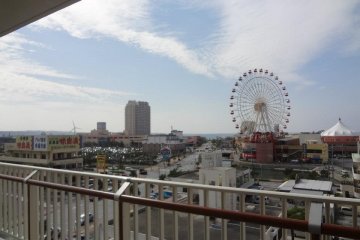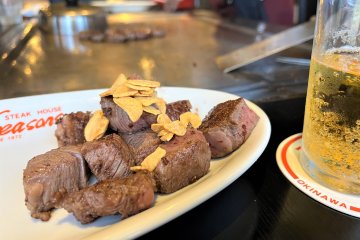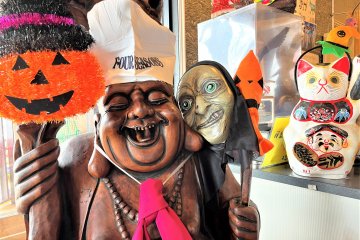A moment in time cast the die that sent Yoshiro to the other side of the world. His parents died when a bomb exploded. Searching for a new life, a ship took him far away to the Argentine Pampas. Eighteen-year-old Yoshiro, lacking in skills but full of promise, was taken under the wing of the Gaucho, the nomadic and yet fiercely loyal horseman of cattle, learning how to raise Angus Cattle.
He went where his heart took him, like a migratory bird, but he was on a journey of no return. “You can’t stop birds from flying,” he told his daughter Rika. “Of course, birds fly by instinct” she countered, puzzled by her father’s mix of openness and secrecy as if he was trying to protect her from something.
When faced with doubt, she asked herself, 'What would my dad say to me right now?” Knowing little of her dad’s life in Okinawa, Rika returned as a chef in Okinawa trying to recreate the aromas of the Sunday asado grills her dad so lovingly made for his family.
You don’t have to look far to see the legacy of those times here. From the old grandfather clocks to the sounds of jazz, there is a mixture of new and old, a potpourri of East and West. On arrival, a maneki-neko cat adorned with Day of the Dead motifs greeted me, the Mexican equivalent of Obon or All Souls Day. Next to the cat was an Ebisu-like laughing Buddha, holding a totem with an orange Halloween pumpkin, a nod to the nearby American Village.
Japanese efficiency comes into play with the reservation machine, where you type in the number of adults and children in your group, so they can prepare the best dining table for you.
The small teppanyaki tables for four persons means everyone can chat easily with each other on the rectangle table with the steel plate on one side and the chef taking one side of the table, tempting me to take up a lesson in the ways of Kobe beef. The chefs here may be friendly but deadly serious with their cooking, chopping the wagyu steak into bite-size pieces, while not losing any of its juiciness and taste. In nearby Ishigaki Island, the rich minerals in the soil help with creating a delicious and nutritious steak, one grown in a stress-free sub-tropical environment.
The side of stir-fried bean sprouts is a standout along with garlic rice, which though a touch on the oily side makes it a perfect complement to a glass of beer. Speaking of which, what do Okinawans eat after drinking? Instead of ramen on Honshu, many people here would make a bee line for steak, making this diner a popular choice at night.
Four Seasons was founded in 1972, the year when the American government handed back the Ryukyu Islands to Japanese sovereignty. It was a time of change and hope, one that Four Seasons took on its mission to make quality food accessible to people of every season and culture. Today I can see many Japanese and American people enjoying the communion of eating together. Besides Wagyu beef, they also serve hamburger steaks, lobster, Okinawan pork, and chicken. While this can be a fun date out, the menu is more suitable for small groups or families, with a middle-of-the-road menu that is best shared.











